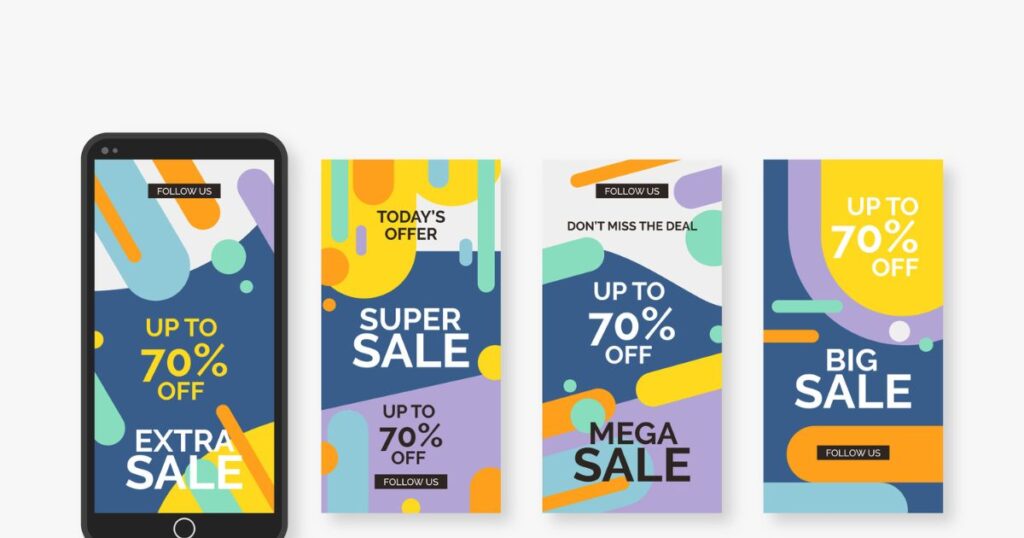Over the years, I’ve managed all digital marketing channels for 20 online shops and learned valuable lessons.
Here’s what I’ve learned.
- 1. Everything Starts With Your Product
- 2. Invest in Brand Strategy
- 3. Define Your Main KPIs Right From the Start
- 4. Have All the Data You Need
- 5. Competitor Analysis
- 6. Map All Marketing Activities
- 7. Plan Enough Resources for Ad Creatives
- 8. Focus on Bestsellers
- 9. Prioritize Activities According to Effort and Potential Returns
- 10. Define Decision Makers per Channel
- 11. A/B Test As Much As Possible
- 12. Pricing Is a Key Part of Your Strategy
- 13. Automate Your CRM As Much As Possible
- 14. Diversify Your Activities
- 15. Keep an Eye on the Big Picture
- 16. Frequent Campaign Changes – Is There An Added Value?
- 17. Even With Frequent Campaign Changes, They’re Not a Must for Performance Channels
- 18. Invest in SEO
- 19. Analyze Your Funnel To Identify Your Problems
- 20. Optimize Your Landing Pages
- Conclusion
- Further Reading:
1. Everything Starts With Your Product
If your product is cheap, ugly, copycat, without added value, and doesn’t solve any problem or want, it will probably fail.
Start with WHY as in why would anyone want it? If your product’s intrinsic value is low, you better have a very good story around it.
The better your product, and the better your (brand) story around it, the easier it will be to sell.
2. Invest in Brand Strategy
You should invest a lot in brand strategy – positioning, promise, target audience, differentiation from the competitors and buyer personas. The more solid your brand strategy is, the clearer your value will be to your audience.
Brands I managed that didn’t have a solid brand strategy had a much harder time acquiring new customers.
The sooner, and deeper you think about these topics, the more prominently your brand will stand out from the crowd. You could incorporate it into your products, packaging, and all marketing communications.
3. Define Your Main KPIs Right From the Start
You should decide which KPIs to focus on right from the get-go, including their target values (i.e. profitable values). Expect to start slow and improve over time.
BE REALISTIC and reassess your KPIs every 3 months – do they develop in the right direction? If not, what can you do differently?
Example: You focus on new customer acquisition so your main KPI is CAC. As a rule of thumb, its value should be at least a 3rd of your average customer lifetime value (LTV).
4. Have All the Data You Need
Make sure you have all the IMPORTANT data you need. Examples: CAC, LTV, return rate, avg. margin per order/category/product.
There’s no need to track and measure hundreds of metrics no one will ever look at. Save the IT resources to focus on what matters.
Just make sure you don’t shoot in the dark.

5. Competitor Analysis
This one is critical before you start, but is also super important on an ongoing basis. Make sure to perform a deep analysis of competitors – what they offer, their USPs, and campaigns.
Who do they target? What language and style do they use? What creatives do they use in their ads?
Also, think about what your competitors DON’T offer. How can your brand distinguish itself from the other players?
6. Map All Marketing Activities
Have a clear understanding of how each marketing activity supports the overall strategy.
Does it target prospects in the high funnel? Low funnel? Retention? What are the expected outcomes? What are the main KPIs to evaluate it by?
I’ve seen a lot of money being spent on activities without a clear added value. Make sure you bring these lost costs to a minimum.
7. Plan Enough Resources for Ad Creatives
Good ad creatives make or break your ads. They are especially crucial for Facebook and Instagram ads, where A/B testing of creatives plays a central role. Make sure you have enough graphic resources for ad creatives – images, videos, UGCs, etc.
Having 10 good images will not be enough to run ads for more than a couple of months. Outsource if necessary.
8. Focus on Bestsellers
Especially when you just started, only run a few campaigns that focus on your best sellers. The message should be as focused as possible.
Once you’ve established good performance for your best-seller campaigns, start running ads for more good categories.
9. Prioritize Activities According to Effort and Potential Returns
Prioritize all marketing activities according to resources and their benefits in the short, mid, and long term.
From my experience, changing campaigns too frequently shifts focus and resources from other activities (e.g. creatives for A/B testing, SEO articles) and adds complexity to performance analysis over time.
SEO requires high investment at the beginning but could bring very positive results in the mid and long term.
10. Define Decision Makers per Channel
Flat hierarchies sound nice, but deciding which creative to use or which campaign to run shouldn’t involve 10 people.
Not only do too-large decision rounds steal precious time, but they also often result in sub-optimal campaigns and creatives due to compromise.
1-3 people should be enough to brief and approve activities and creatives, and the lead decision-maker should be either the channel lead or the marketing lead above it.
11. A/B Test As Much As Possible
A/B test campaign creatives, landing pages, ad copy, offers… the more the better. But make sure you know what you’re testing, and that insights build up on top of each other in a meaningful way.
Here are some test examples:
- Does a 10% discount work better than $10 for newsletter sign-up?
- Do product pages perform better as landing pages than category pages?
- Does one graphic style work better than another?
- Does a certain angle work better in the ad copy than the rest?
Keep the winners and continue to test your next hypothesis.
Start with tests that don’t require IT resources and the ones that have the biggest potential to improve CVR and acquire new customers.

12. Pricing Is a Key Part of Your Strategy
Your pricing should match your desired positioning. You can’t charge more for a product that’s similar to a competitor’s unless your whole branding strategy focuses on high quality and exclusivity.
A cheap product will attract a younger, less affluent audience, and your website should feel lighter. An expensive product should be accompanied by a more elegant and exclusive look and feel.
13. Automate Your CRM As Much As Possible
Your CRM activities should be mostly automated – welcome Emails, educational Emails about products or trends, retention, cross-selling…
A good welcome Email series should cover all of your main products or collections and educate the readers about their benefits. This way you make sure your readers are aware of your wide offering and can promote it year-round, not only once a year during a campaign.
Automation and steering away from ad-hoc newsletters will save your team a lot of time and work, and also be much more beneficial in terms of optimization and A/B testing.
Ad-hoc newsletters should be saved for when you really have something new and important to say (e.g. new products/sales).
14. Diversify Your Activities
This is essentially risk management, but also a way to discover new opportunities.
It’s happened to me more than once that Facebook suspended an ad account for whatever reasons. If that happens, make sure you have enough ways to compensate for that drop, e.g. with Instagram influencers, Pinterest, TikTok, and SEO articles (longer-term impact).
15. Keep an Eye on the Big Picture
Tracking channel performance has become much harder with the rolling out of privacy updates. To that, one must add Google and Facebook’s tendency to over-attribute sales to their platform, at the expense of other channels.
However, one thing remains true – the bottom line matters the most. How much money you’ve made, compared to how much you’ve spent. This metric is also known as MER – Marketing Efficiency Ratio. You can decide whether you want to measure it on a gross basis, after VAT (net) or after VAT and returns (net-net).
Whatever you decide, MER should be your guiding star. I remember running display campaigns that returned a ROAS of 1.5 (pretty good for ‘cold calling’ display), but the gross MER was at 10 and the volumes increased. So I let it continue running.
If the MER is good, you can try to scale the channels that seem to contribute the most.
16. Frequent Campaign Changes – Is There An Added Value?
Many brands change campaigns every few weeks. There were 2 main reasons behind it: To give exposure to the full product assortment and to avoid campaign fatigue/boredom among potential customers.
As to presenting more categories, that’s fine, but not all categories are created equal. A best-seller category with a high AOV is much more valuable than the 7th best-seller category that has a much lower AOV.
So my recommendation would be to make fewer changes on-site and do frequent A/B tests for ads off-site.
If you’re worried about prospects getting bored by seeing the same homepage banner for a whole month, ask yourself, how often do you check a certain online shop after completing your purchase?
As a marketer you need to keep this in mind: It’s YOU who sees the same creatives over and over again, it’s YOU who are getting bored. YOUR CUSTOMERS AREN’T AWARE or simply DON’T CARE.
According to the 80/20 law, focus 80% of your efforts on your best sellers.
‘Secondary’ categories can be features in automated newsletters (part of the welcome series or cross-selling), on Google shopping ads, Facebook DPAs, organic search results, and organic social channels.
Focusing on them for a full several weeks will result in significantly lower sales.
Other issues I find with frequent campaign changes:
- They require a lot of resources from the team
- It’s very hard to measure their overall benefit
- They interfere with other on- and off-site tests
So ask yourself – are they necessary?
17. Even With Frequent Campaign Changes, They’re Not a Must for Performance Channels
So the brand team decided they’d like to change on-site campaigns every 2 weeks to give exposure to different products and themes. That doesn’t mean it’s a good idea to change creatives and messaging on Facebook or display campaigns accordingly.
Frequent changes to performance channels can be a problem. Every time you make a change the campaign starts learning again and takes time to recalibrate. Moreover, it makes it harder to attribute performance to channel management or to the changing offers. This makes reading the data more complex, as well as basing decisions on it.
Except during big sales, I’d keep Facebook and display channels independent from the on-site campaigns, to allow for incremental learnings.
18. Invest in SEO
SEO shouldn’t be an afterthought of your marketing strategy. Make sure your site speed, URLs, headline, metas, and images are all SEO optimized.
Plan an on-site content strategy that includes ever-green articles that are relevant to your target audience, e.g. health benefits, trends, etc…
Even if the first results take time to show, SEO is essential for long-term growth.

19. Analyze Your Funnel To Identify Your Problems
What do you need to improve to meet your target? Do you have enough traffic? Is it your CTR on Facebook Ads? Maybe CTR is good but CVR is sub-par? Or you could squeeze an extra 10% in revenue by improving AOV?
Make sure you analyze each contributing element in the value chain and the customer journey. Then you can prioritize the required changes by lowest investment and biggest potential impact, and start working to improve it with A/B testing.
Examples:
- Increase traffic by investing in SEO: optimize URLs, headlines, and metas, create new category pages and blog articles.
- Improve CTR by A/B testing different creatives and ad formats: single images vs. videos, brand-produced videos vs. UGCs, etc…
- Improve CVR by placing the add to cart button above the fold on mobile devices, and placing your USPs (e.g. a 1-year warranty) right beneath it. Another way would be to focus your campaigns on best sellers and sidekicks and allocate less budget to the rest of the products.
- Increase AOV by focusing on more expensive products and by adding cross-selling on the product page or post-purchase Emails.
20. Optimize Your Landing Pages
Your campaigns don’t live in a vacuum – the best Google or Facebook campaign in the world won’t bring good results with a poor landing page.
Gradually improve your landing pages with A/B testing.
Here are some examples:
- Test the first product image on the collection or product pages
- Change how and where you display your USPs
- Test the copy on the add to cart button
- Add urgency / low stock message
- Add social proof (reviews and UGC images)
- Improve site speed
Conclusion
Managing an online shop is neither simple nor easy. There are just so many things to take into consideration.
Maintaining a strategic approach to the big picture is key, as well as looking at the most important, full data, being critical, and having an A/B testing mindset.
I hope these insights will help you drive your Ecommerce business to success.
Further Reading:
- Google Ads vs. Facebook Ads For Ecommerce: Which Advertising Platform Is Better For Your Business?
- PPC vs. SEO: Which One Is Better? Pros, Cons, And When To Use Which
- Common SEO Mistakes to Avoid on Ecommerce Websites
- What Is Conversion Rate (CVR) And How to Improve It
- How to Craft a Powerful Value Proposition on Google Display Ads
- Spying On Google Ads: PPC Competitor Analysis

